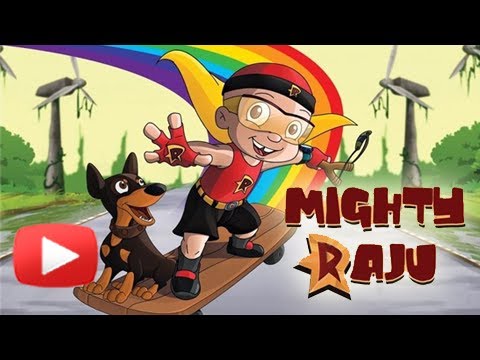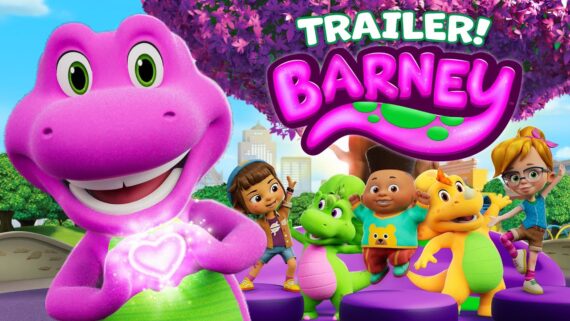From Notebooks to Netflix with Ritaban Dass

“I sucked at studies, and my parents knew that very well,” Ritaban laughs. “I spent most of my time with a box of chalk and a slate my father gave me.” Growing up in the golden age of Cartoon Network, his earliest drawing education came from sketching characters on the back pages of notebooks. It earned him a bit of a fan following among seniors. “I kind of knew what I wanted to do in life,” he says, “and I’m very fortunate to have received all the support from my parents.”
Over the course of his career, Ritaban Dass has built an impressive and diverse body of work across both the Indian and Canadian animation industries. From early roles as an illustrator to becoming a sought- after storyboard artist, he has contributed to globally recognized titles such as Unicorn Academy (Netflix), Care Bears: Unlock the Magic, Paw Patrol Specials, and Barney’s World (HBO Max).


Illustrations by Ritaban Dass
“I didn’t go to an art school,” he says, “Working in different studios, observing people’s work and getting help from seniors helped me sharpen my craft.” Storyboarding was always the goal- even when the opportunities weren’t. That clarity carried him through a one- year diploma in 2D animation in Kolkata in 2007, followed by an early move to Mumbai.
Back then, junior storyboarding gigs were rare. So Ritaban first worked as an illustrator, slowly building a storyboard portfolio in the background. It wasn’t until 2013, after years of hustle, that he landed his first storyboard artist role at Maya Digital Studio.

Illustrations by Ritaban Dass
“Starting as an illustrator and designer gave me a strong visual foundation that naturally feeds into storyboarding. As an illustrator, you learn to compose images, convey emotion through visual elements, and guide the viewer’s eye.”
Ask Ritaban about his process and he’ll take you through a methodical, feedback- driven routine. He starts with a script or creative brief to understand the tone and target audience, then dives into thumbnail sketches to explore angles and composition. These get pitched to the director or team, refined, cleaned up, and finally stitched into an animatic using ToonBoom Storyboard Pro.
“I started storyboarding in Photoshop, but later, I transitioned to ToonBoom Storyboard Pro, which quickly became my essential tool for boarding. It streamlines the process and saves time, especially when creating animatics.”
That workflow has served him across a wide spectrum of studios and shows- from Green Gold’s Mighty Raju: Rio Calling, where he first cut his teeth on feature- length storytelling, to international projects like Unicorn Academy at House of Cool, Care Bears: Unlock the Magic at Copernicus Studios, and Paw Patrol Specials at Guru Studio.
Landing his first feature film gig just six months into his storyboarding career was no small feat- and it came with its share of challenges. Ritaban recalls. “Anirban da, the head of pre- production/director, really guided me and helped sharpen my storytelling through boards.” The shift from episodic content to a feature film demanded a new level of focus and finesse.
Ritaban worked as a storyboard artist for an animated feature film called "Mighty Raju: Rio calling" which released on May,2014.
Ritaban worked as a storyboard artist for an animated feature film called "Mighty Raju: Rio calling" which released on May,2014.
“Storyboarding for a film often involves long sequences that evolve slowly, focusing on visual motifs, cinematic transitions, and emotional beats that need to land with impact. ”
“In contrast, the episodic format focuses more on efficiency and rhythm, ensuring each scene advances the plot or builds character while staying within a faster- paced format.” Ritaban adds.
Between stints as a board artist, Ritaban briefly stepped into art direction- first at Sparky Entertainment, then at Reliance Animation. “Both times, the opportunity came as a surprise while I was working as a storyboard artist in the industry, and after doing it, I still feel much unprepared for the role.” he recalls. “[However] it sharpened my ability to define and maintain a show’s visual identity while balancing creative vision with limited resources and ensuring every design choice supports the story.”
At House of Cool, Ritaban took on Unicorn Academy for Netflix- a visually rich, CG- animated fantasy adventure about kids and their unicorn companions. “It was a challenging show,” he says, “because it involved action, magic, and drama blended with cinematic shots.” The freedom of 3D staging meant thinking beyond flat compositions-while the story’s emotional core required him to draw complex sequences involving galloping unicorns and magical action.
Ritaban worked as a Story Artist for two seasons which premiered on Netflix.
“Every week, we used to have hour- long pitch meetings where you had to present your boards and pitch your ideas in front of the show- runners, directors and supervisor, and that helped me shape my storytelling qualities for this show and made me understand what they are looking for and how much I can push it.”
“It was my first Canadian studio experience, and the talent around me really pushed me to grow,” he reflects.
That momentum carried into Care Bears: Unlock the Magic at Copernicus Studios, where he had the rare chance to contribute to an iconic legacy brand. “The deadline was tight, but I knew the tone. I’d worked on preschool content before, and the exaggerated acting and humour came naturally.”
View this post on Instagram
Storyboard for Care Bears by Ritaban
His next stop was Nelvana, where he helped storyboard Barney’s World, a modern revival of the beloved ’90s classic.
Ritaban worked as a Story Artist for one season which premiered on Cartoon Network & HBO Max
“It was a unique and meaningful experience working with Nelvana, especially considering its legacy as one of the oldest and most respected animation studios in North America.”
“The scripts were full of magic and music, and the directors often shared thumbnails to guide the visual approach”. Nelvana’s experienced team and supportive environment enriched the production process, allowing Ritaban to bring warmth and energy to a globally recognized brand- all while learning from top- tier professionals in children’s entertainment.
And then came Paw Patrol Specials at Guru Studio, where Ritaban tackled a 10- minute action- packed sequence within a 45- minute special. “It was hectic,” he laughs, “but I worked closely with the director, planning everything at the thumbnail stage.”
Ritaban worked as a freelance Story Artist for Paw Patrol Specials episodes.
“One key challenge is maintaining consistency with well- established characters and storytelling formulas while keeping episodes fresh, engaging, and age- appropriate.”
Maintaining consistency while injecting cinematic energy into such a high- profile, globally loved franchise was a creative challenge- and one Ritaban embraced with precision and flair.
At Industrial Brothers, where he’s currently working on an unreleased 3D preschool series involving dinosaurs, action, and humor, the visual sensibility he’s honed over the years continues to evolve. “I can’t say much about the project until it gets released, but I can only say that it is cinematic, with loads of action and humour and involves lots of dinosaurs!,” he grins. “I love drawing dinosaurs, so this project has already ticked that box.”
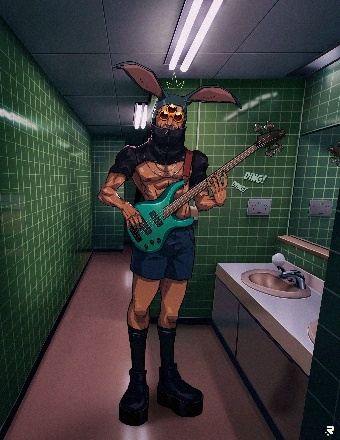
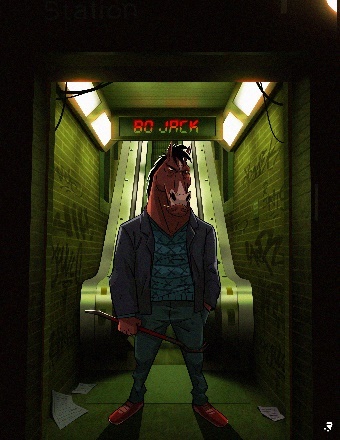
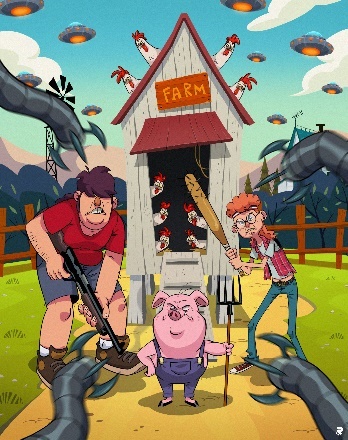
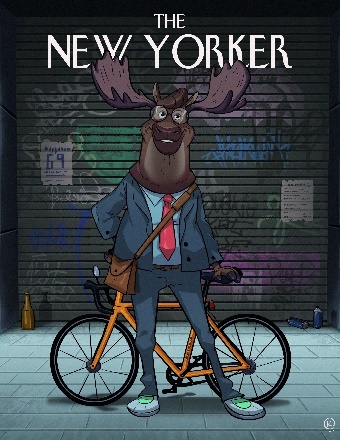
Illustrations by Ritaban Dass
He emphasizes how different the Canadian animation ecosystem feels compared to India’s. “India fosters adaptability and speed, and Canada nurtures depth and process- driven creativity” he says. Canadian projects typically focus on subtle, character- driven storytelling, while Indian content often leans toward high- energy, moral- driven tales with cultural specificity.
Outside of animation, Ritaban also makes music under the name Rito. “I just finished my debut album and will be dropping it this year,” he shares.
For young artists hoping to follow a career in storyboarding, he keeps it simple: "Make a strong, clear portfolio. Be professional. Learn the tools. Stay open."
Because whether you’re sketching on a chalk slate or building animatics for global franchises, it all comes back to that first spark- the one Ritaban had as a ’90s kid scribbling cartoons in the margins.
With that we come to end of this feature with Ritaban Dass. We thank him for his time and wish him all the very best for the future.
You can reach out to Ritaban on the channels below:

Ritaban Dass

